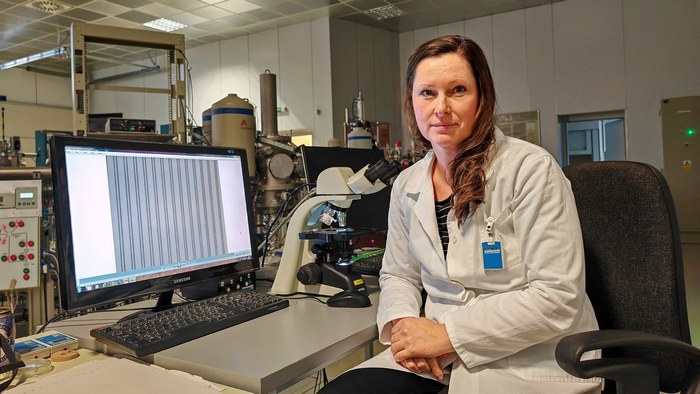
When an Accelerator Draws with Carbon into Glass
13. 02. 2025

A team of scientists and engineers from the Nuclear Physics Institute of the Czech Academy of Sciences has successfully demonstrated the possibility of altering the structure and physical properties of glass using carbon ions accelerated by the Tandetron accelerator in Řež. Through carbon ion implantation, the team created a regular optical structure in glass—specifically, microchannels (technically known as waveguides) capable of transmitting optical signals of precisely defined wavelengths. These channels are only two thousandths of a millimeter deep and one thousandth of a millimeter wide.
This fundamental research experiment opens the door to further miniaturization of optical components and more general applications of readily available silica glass. The significance of the results is underscored by their publication in the prestigious journal Optics & Laser Technology. The experiment was conducted in collaboration with researchers from Jan Evangelista Purkyně University and the University of Chemistry and Technology in Prague.
To create the microchannels, the glass was “bombarded” with accelerated ions through a mask (template)—a method allowing localized ion implantation into the material. Carbon ions were chosen because this particular element can alter the refractive index of light and thus control which wavelengths of optical signals are guided through the waveguide and which are not. Carbon is also light enough to disturb the glass structure only to the extent required.
The experiment was preceded by complex calculations based on an extensive review of the physical properties of various types of glass and their interactions with ions. Numerous simulations were performed beforehand, including tests to determine the necessary strength of the mask to withstand the ion “bombardment.”
The accelerator operators played a crucial role in the experiment: they had to generate a stable ion beam and maintain its energy. Carbon ions with energies ranging from 0.8 to 1.6 MeV were used in steps to achieve the desired waveguide profile. The operators also ensured the quality of the vacuum in the experimental chambers to prevent contamination of the samples.
The Tandetron used in the experiment is housed in the “accelerator tower” at the far end of the Řež research site. In addition to the Tandetron, this striking silver building also houses the Canadian TR-24 cyclotron and the Swiss MILEA accelerator mass spectrometer, which is widely used, for example, in radiocarbon dating of various objects. Besides these three instruments, the NPI also operates the U-120M cyclotron and a microtron. The U-120M cyclotron is used, for example, in the development of new radiopharmaceuticals for medical applications, while the microtron—like the Tandetron—is used for advanced materials research.
Photo: Experimental team member Romana Mikšová from the Tandetron Laboratory (c) David Šebek
Read also
- The Nuclear Physics Institute of the CAS celebrated its 70th anniversary
- The NPI stand at VědaFest broadcast live on Czech Television
- Second “Day with Theoretical Nuclear Physics” attracted students from across the country
- Martin Schäfer receives Otto Wichterle Award
- NPI organized the ReMade@ARI workshop, focusing on cutting-edge materials characterization and international collaboration
- NPI Co-Organized the 5th Meeting of the EIC International Financial Committee at BNL
- Radiocarbon Dating Reveals Gaps in Elephant Protection
- We are participating in two new projects focused on cosmic rays
- Roman Garba presented his research in Austria and the United Kingdom
- Our Research on Improving Silver Content Measurement in Mushrooms Supported by the AV21 Strategy

